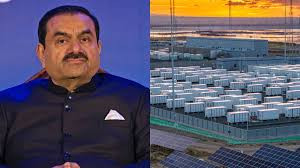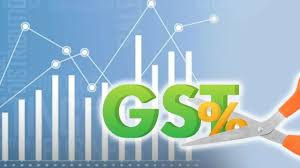India’s Growth to Withstand Global Tariff Pressures, Says Moody’s

IIE DIGITAL DESK : Despite rising global trade tensions and potential tariff barriers, India’s economic growth is unlikely to suffer any major setback, according to a recent analysis by Moody’s Investors Service. The global rating agency has stated that India's economy is well-positioned to weather the impact of tariffs due to its robust domestic demand and relatively low dependence on exports.
Moody’s emphasized that although tariffs and protectionist policies in the global trade environment might hurt some export-driven nations, India’s growth trajectory remains firmly rooted in domestic consumption and investment-led expansion. This makes it less vulnerable to the fluctuations in international trade dynamics that typically follow tariff impositions.
India, which is projected to be one of the fastest-growing large economies in the world, has seen a surge in manufacturing initiatives under the ‘Make in India’ and Production Linked Incentive (PLI) schemes. These reforms aim to boost domestic production, reduce import reliance, and make Indian manufacturing globally competitive. Moody’s noted that such policy initiatives are already starting to shift the economic structure, reducing exposure to external shocks.
According to Moody’s, exports account for only about 20% of India’s GDP, compared to much higher figures in East Asian economies such as Vietnam or South Korea. This lower export-to-GDP ratio shields the Indian economy from severe external pressures. While the country does export a significant volume of software services and pharmaceuticals, these sectors are generally less impacted by traditional tariff barriers.
The agency also highlighted India’s large and growing middle class, which continues to support domestic demand, especially in sectors like consumer goods, housing, retail, and services. This, combined with improved government capital expenditure and infrastructure push, is expected to sustain the economy's momentum even in a tougher global trade environment.
Another factor working in India’s favor is its increasing efforts to forge bilateral and multilateral trade agreements. India has been actively engaging with partners in the Indo-Pacific, Middle East, and Europe to create new economic corridors. These agreements not only offer better market access but also help in mitigating the adverse effects of unilateral tariff actions from countries like the United States or China.
Moody’s also made note of the Reserve Bank of India’s supportive monetary policies and the government’s prudent fiscal management, which have created a stable macroeconomic backdrop. Inflation is largely under control, and foreign exchange reserves remain healthy, both of which contribute to investor confidence and economic resilience.
In the longer term, India is expected to benefit from the global realignment of supply chains. Many multinational companies are looking to diversify their production bases away from China, and India has emerged as a potential alternative due to its large labor force, improving infrastructure, and government incentives. This shift could further insulate the Indian economy from the adverse impact of global trade restrictions.
However, Moody’s did caution that while tariffs may not significantly harm India's overall growth, certain sectors such as textiles, electronics, or automotive components—where India still depends on specific global markets—could experience short-term disruptions. The government’s ability to respond swiftly to sector-specific challenges will be crucial in maintaining overall economic stability.
Moody’s remains optimistic about India’s growth prospects despite rising tariff threats globally. Its diversified economic base, strong domestic consumption, and strategic policy measures are expected to serve as a buffer, ensuring that India stays on track to becoming a $5 trillion economy in the coming years.
You might also like!
















